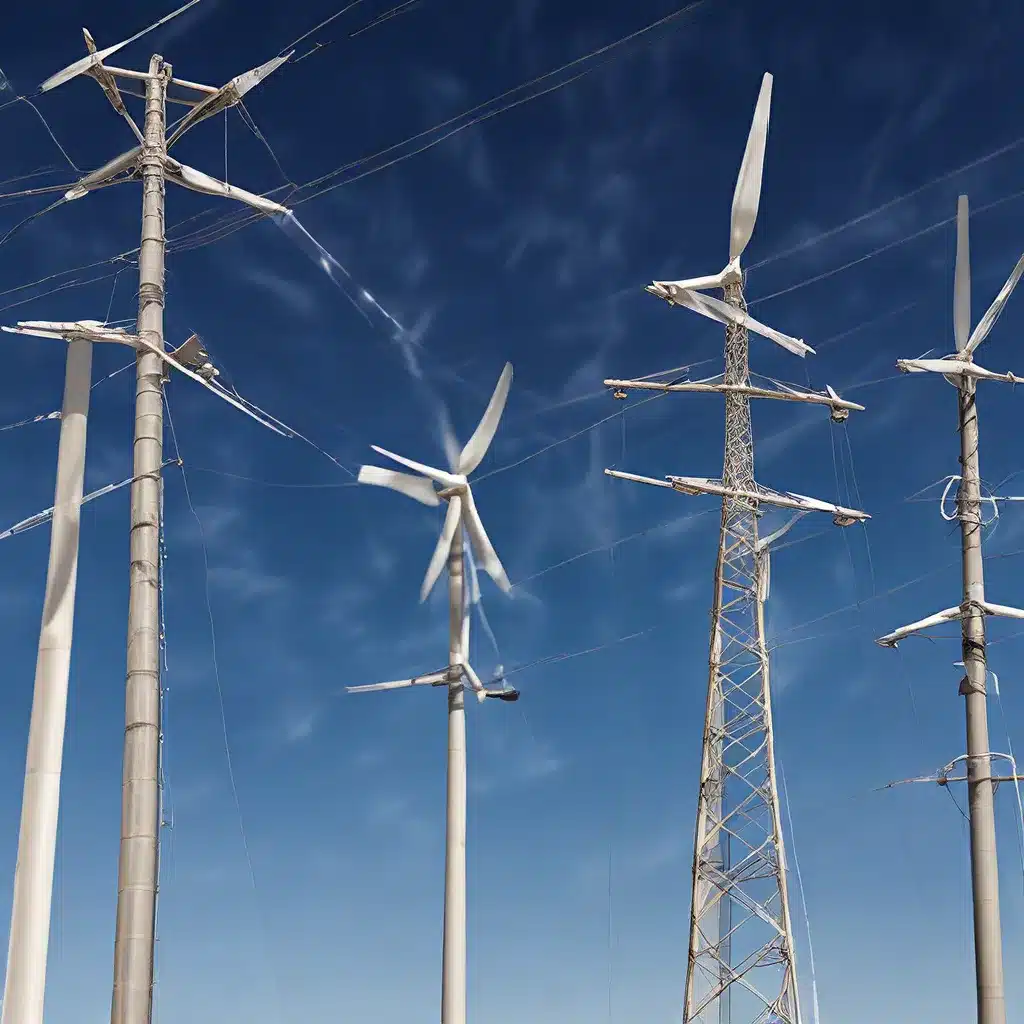
The Rise of Smart Grid Technology
As the global demand for renewable energy continues to grow, the need for innovative sensor network technologies has become increasingly crucial. Smart grid systems, empowered by the Internet of Things (IoT), have emerged as a transformative solution to address the complexities of modern energy management.
Smart grid technology is enabling the effective management and distribution of renewable energy sources such as solar, wind, and hydrogen. By leveraging IoT to collect real-time data on the grid, utilities can quickly detect and resolve service issues through continuous self-assessments. This self-healing capability is a vital component of the smart grid, as it reduces the reliance on customer reports to maintain reliable power delivery.
The relationship between the smart grid and renewable energy revolves around gathering data. For example, wind farms utilize mechanical gears that require each link to support multiple sensors. These sensors can note current climate and environmental conditions, which are then rapidly transmitted through the grid to alert the utility of any potential issues. This data-driven approach not only improves the quality of service but also enhances overall safety.
Semiconductor Advancements Driving Smart Grid Evolution
The rise of smart grid technology has been fueled by advancements in semiconductor materials, such as silicon. These materials have enabled the creation of IoT devices capable of holding millions of minuscule transistors, which are crucial for linking up devices throughout the system. This interconnectivity ensures that the supply of energy is equal to the demand, while also keeping the current evenly distributed.
Smart grids equipped with parts made from semiconductor material can reduce the usage of electricity in various ways. For instance, electric vehicles can be programmed to charge at night, a time when offices and homes are not typically using much electricity. Additionally, lights, switches, and furnaces can be automatically powered on and off, making energy usage smart by not consuming more than what is needed.
As smart grid technology becomes more promising, both local and federal governments are exploring potential grid improvements. For example, Thailand aims to generate a third of its energy from renewable sources by 2037, which will require modernizing the grid to handle the varying levels of energy provided by these sources. Similarly, New York is holding a competition to improve the state’s energy distribution, focusing on data analytics, grid stability, and forecasting, while reducing system losses.
Sensor Networks and IoT: Enhancing Renewable Energy Integration
IoT is allowing organizations to cost-effectively implement smart grids, also known as microgrids. Through IoT-based energy technologies, companies could revolutionize the way power is delivered to consumers around the world. As global temperatures continue to rise, so too will power outages and the demand for renewable energy. In this context, grid-forming inverters may be a potential solution for transitioning to a more sustainable and resilient energy future.
Smart inverters, a core smart grid technology, act as intelligent control points between solar arrays and the grid, managing two-way power flows. These devices can modulate power output in response to grid conditions, preventing overload and instability. The integration of IoT is especially important for renewable energy integration, as small transistors placed in various components can collect and transmit real-time data to optimize the entire system.
Securing the Smart Grid: Addressing Vulnerabilities
As the smart grid becomes more interconnected through IoT devices, the risk of cybersecurity threats also increases. Malicious actors could potentially target critical infrastructure, disrupting power supply and causing widespread outages. To mitigate these risks, robust security protocols and advanced encryption techniques must be implemented throughout the sensor network and IoT-enabled grid systems.
Blockchain technology has emerged as a promising solution for securing smart grid infrastructure. By leveraging the decentralized and transparent nature of blockchain, energy transactions and grid operations can be tracked and verified, reducing the risk of unauthorized access and data tampering. Additionally, machine learning and artificial intelligence can be employed to detect and respond to cyber threats in real-time, enhancing the overall resilience of the smart grid.
Energy-Efficient Sensor Designs for Sustainable IoT
As the deployment of IoT devices continues to expand across smart grid and renewable energy systems, the demand for energy-efficient sensor designs has become paramount. Sensor networks that operate on limited power can reduce the overall energy consumption of the IoT-enabled grid, contributing to its sustainability and environmental impact.
Low-power sensor technologies, such as ultra-low-power microcontrollers and energy-harvesting techniques, have emerged as key enablers for energy-efficient sensor networks. These advancements allow sensors to operate for extended periods without the need for frequent battery replacements or external power sources, reducing maintenance costs and environmental waste.
Furthermore, edge computing and distributed processing strategies can optimize the data management within sensor networks, minimizing the need for constant data transmission to central hubs or the cloud. By preprocessing and aggregating data at the edge, sensor nodes can significantly reduce their power consumption, contributing to the overall energy efficiency of the smart grid infrastructure.
The Future of Sensor Networks in Smart Grids and IoT
As the demand for renewable energy continues to grow, the role of sensor networks and IoT in smart grid technology will become increasingly crucial. Advancements in semiconductor materials, edge computing, and cybersecurity solutions will drive the evolution of sensor-based systems, empowering utilities and energy providers to manage and distribute renewable energy more effectively.
The integration of sensor networks with smart grid and IoT technologies will enable a range of innovative applications, from predictive maintenance and grid stability monitoring to energy demand forecasting and load balancing. These data-driven insights will optimize energy distribution, enhance grid resilience, and promote sustainable energy practices, ultimately shaping a more efficient and eco-friendly energy future.
By leveraging the power of sensor networks and IoT, the smart grid can transform the way we generate, distribute, and consume energy. As the world continues to embrace renewable energy sources, the sensor-enabled smart grid will play a pivotal role in driving a sustainable energy revolution, revolutionizing the way we power our communities and addressing the pressing challenges of climate change.